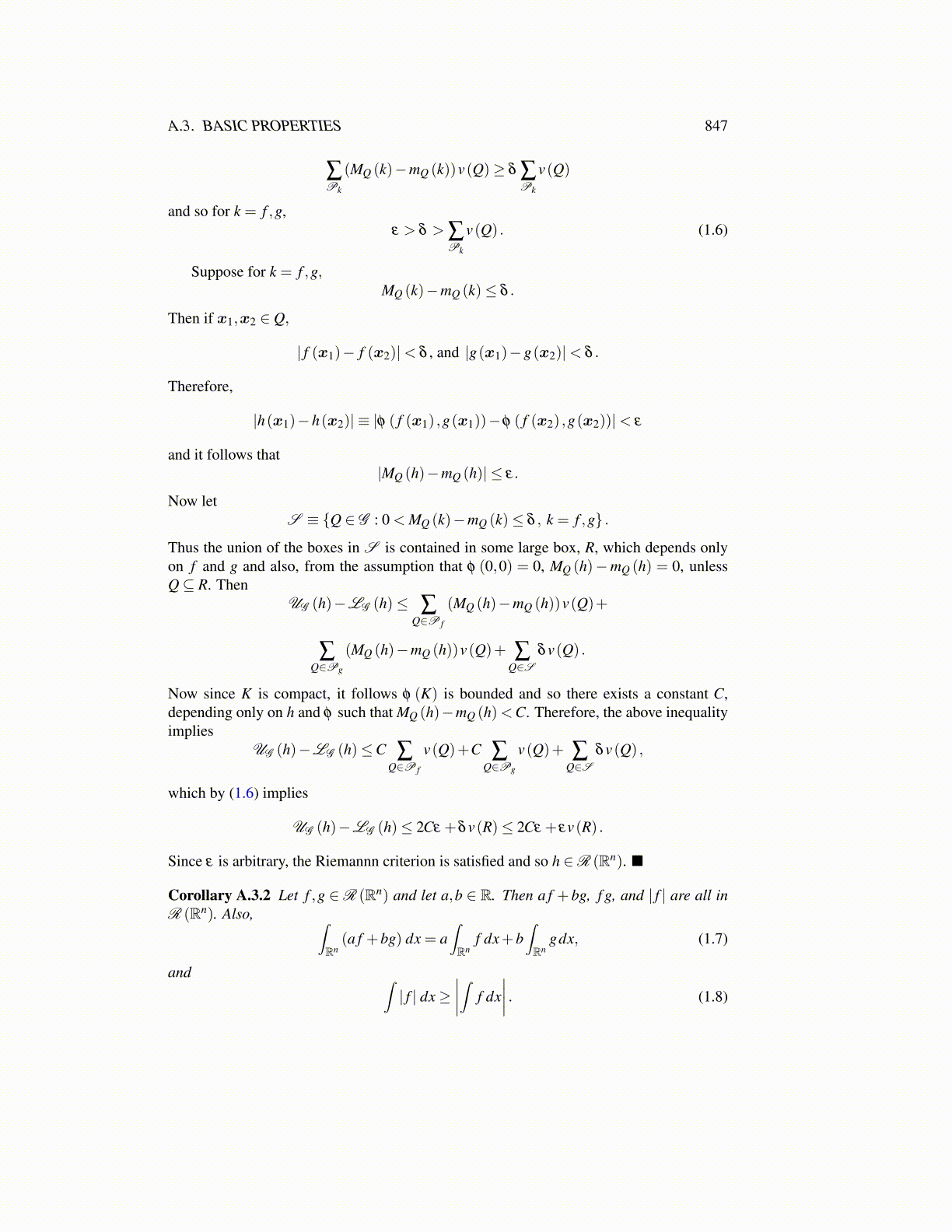
A.3. BASIC PROPERTIES 847
∑Pk
(MQ (k)−mQ (k))v(Q)≥ δ ∑Pk
v(Q)
and so for k = f ,g,ε > δ > ∑
Pk
v(Q) . (1.6)
Suppose for k = f ,g,MQ (k)−mQ (k)≤ δ .
Then if x1,x2 ∈ Q,
| f (x1)− f (x2)|< δ , and |g(x1)−g(x2)|< δ .
Therefore,
|h(x1)−h(x2)| ≡ |φ ( f (x1) ,g(x1))−φ ( f (x2) ,g(x2))|< ε
and it follows that|MQ (h)−mQ (h)| ≤ ε.
Now letS ≡ {Q ∈ G : 0 < MQ (k)−mQ (k)≤ δ , k = f ,g} .
Thus the union of the boxes in S is contained in some large box, R, which depends onlyon f and g and also, from the assumption that φ (0,0) = 0, MQ (h)−mQ (h) = 0, unlessQ⊆ R. Then
UG (h)−LG (h)≤ ∑Q∈P f
(MQ (h)−mQ (h))v(Q)+
∑Q∈Pg
(MQ (h)−mQ (h))v(Q)+ ∑Q∈S
δv(Q) .
Now since K is compact, it follows φ (K) is bounded and so there exists a constant C,depending only on h and φ such that MQ (h)−mQ (h)<C. Therefore, the above inequalityimplies
UG (h)−LG (h)≤C ∑Q∈P f
v(Q)+C ∑Q∈Pg
v(Q)+ ∑Q∈S
δv(Q) ,
which by (1.6) implies
UG (h)−LG (h)≤ 2Cε +δv(R)≤ 2Cε + εv(R) .
Since ε is arbitrary, the Riemannn criterion is satisfied and so h ∈R (Rn). ■
Corollary A.3.2 Let f ,g ∈R (Rn) and let a,b ∈ R. Then a f + bg, f g, and | f | are all inR (Rn). Also, ∫
Rn(a f +bg) dx = a
∫Rn
f dx+b∫Rn
gdx, (1.7)
and ∫| f | dx≥
∣∣∣∣∫ f dx∣∣∣∣ . (1.8)